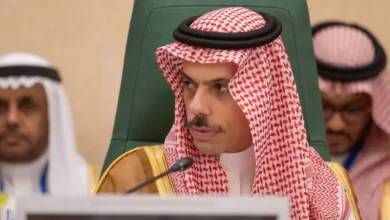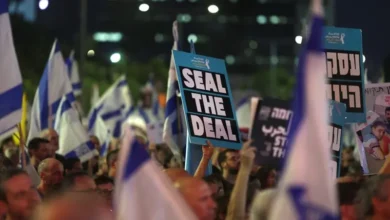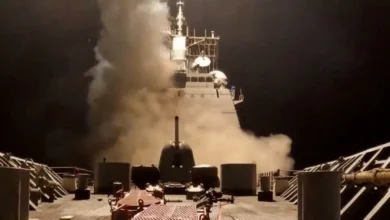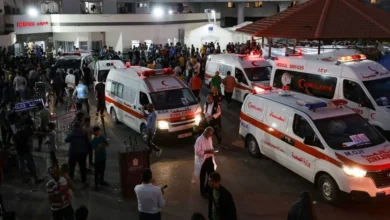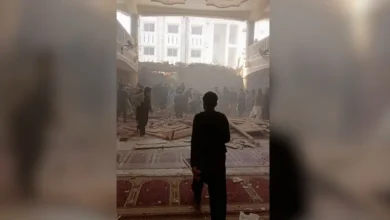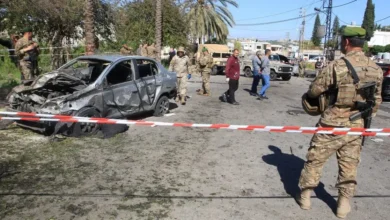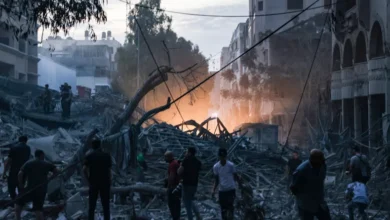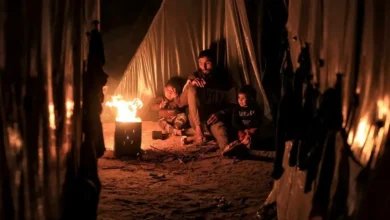Gaza ceasefire deal remains elusive despite US optimism
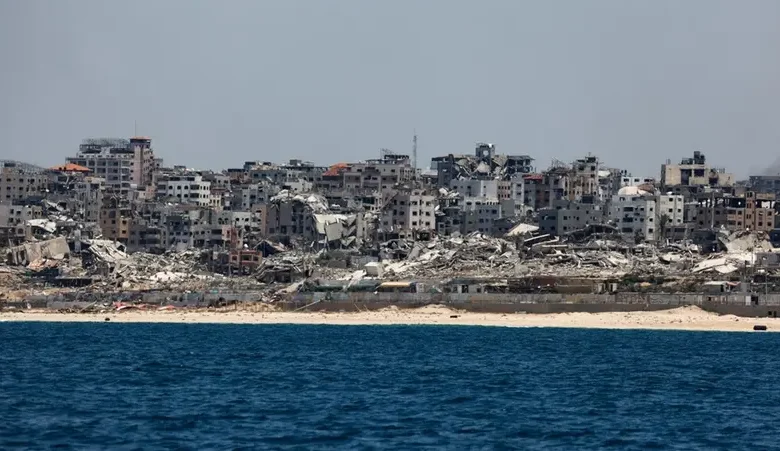
US officials have expressed optimism that a ceasefire in Gaza “is in sight,” despite signals from Israel and Hamas that a breakthrough remains elusive, with renewed fighting continuing in parts of the Palestinian territory.
Washington has been pressing both sides to accept a bridging proposal presented during internationally mediated talks in Qatar last week, prompting Secretary of State Antony Blinken to make his ninth trip to the region since the conflict began 10 months ago. Blinken left on August 21 without securing any major progress.

Negotiations resumed on Thursday, with the heads of Israel’s Mossad spy agency and Shin Bet domestic security service participating in talks held in Cairo, Egypt, a government spokesman said. Discussions are expected to address the issue of the Egypt-Gaza border.
Months of intermittent negotiations have circled the same issues, yet the warring parties remain firm in their demands. Hopes for a resolution have dimmed as the two sides trade blame for the failure to reach an agreement.
Disagreements over Israel’s future military presence in Gaza and the release of Palestinian prisoners are obstructing a ceasefire and hostage deal.
The disagreements stemmed from demands Israel has introduced since Hamas accepted a version of a ceasefire proposal unveiled by US President Joe Biden in May.
Yet, US Ambassador to the United Nations Linda Thomas-Greenfield informed the Security Council yesterday that an agreement is now within reach, following a late Wednesday call where Biden urged Netanyahu to finalize the deal.
“Israel has accepted the bridging proposal. Now Hamas must do the same,” she told the council.
Israeli Prime Minister Benjamin Netanyahu has been blamed for stalling the Gaza talks by reversing his team’s negotiated positions and introducing new, unworkable conditions.
Analysts believe that Netanyahu and Hamas leader Yahya Sinwar seem to be leaning toward continued conflict, casting doubt on their willingness to pursue peace. They are both central to negotiations.
Netanyahu, seemingly resistant to anything short of substantial US pressure or internal challenge, appears intent on prolonging and possibly expanding the war regionally.
Meanwhile, Sinwar might be biding his time, anticipating a promised Iranian retaliatory strike against Israel following the July 31 assassination of Hamas political chief, Ismail Haniyeh, in Tehran. Hamas could be hoping that a broader conflict, potentially involving Hezbollah, would divert Israel’s attention and strengthen its position in future negotiations.
“The critical factor has always been America’s willingness to exercise the leverage it has over Israel, regardless of Netanyahu or Sinwar’s intentions,” said Bilal Saab, head of US-Middle East Practice and advisor in the Scientific and Academic Council at TRENDS research and advisory.
“The reason why these two, particularly Netanyahu, have maintained their current policies is because the US has not been exercising its leverage or pressuring Israel to change course.”
He added, “The current assessment from Kamala Harris’ campaign suggests that it is not politically costly for her to ignore the growing calls for a ceasefire from her support base. However, if the political costs become too high and she faces significant losses in votes, then a shift in policy from the Harris campaign and, by extension, the Biden administration, is expected to occur.”
What comes next?
The renewed emphasis on ceasefire negotiations has become increasingly crucial following the back-to back assassinations of Haniyeh and Fuad Shukr, a senior commander of Hezbollah, the Iran-backed militant group in Lebanon.
The killings, attributed to Israel by Hezbollah and Iran, risk escalating the Gaza conflict into a wider regional war. A ceasefire in Gaza is hoped to ease tensions in the Middle East and prevent further retaliatory actions from Iran and its Lebanese proxy.

Since then, the US has ramped up preparation and bolstered its military presence in the Middle East.
Defense Secretary Lloyd Austin ordered a second aircraft carrier to transition from the Indo-Pacific to the US Central Command’s area of operations. The USS Abraham Lincoln Carrier Strike Group made its arrival on Wednesday night, following Austin’s expedited order to accelerate its deployment.
The Pentagon’s naval and air buildup, the largest since October 7, aims to deter Iran and its militias.
However, Washington remains vigilant for potential reprisals from Iran and Hezbollah. It is uncertain whether they will coordinate a unified joint response or conduct separate operations.
“The Iranians are still able to launch an attack within 12-24 hours of making that decision, which they have yet to make,” one US official said.
Experts argue if a truce between Israel and Hamas collapses, the likelihood of a response from Iran and Hezbollah will increase.
“This scenario is likely to lead to the escalation that everyone fears,” said Saab, adding that “the nature of their revenge matters, not merely the act itself.”
“Iran is anticipated to calibrate its response carefully, aiming to strike a balance between demonstrating strength and preserving its deterrent credibility while saving face,” he noted.
Kristian Alexander, senior fellow and lead researcher at the Abu Dhabi-based Rabdan Security & Defense Institute, explained that while American deterrence reduces the chances of an outright war, it is not foolproof.
“Iran could still escalate tensions through cyberattacks, drone strikes or other indirect methods that offer plausible deniability, he said. “The situation remains susceptible to escalation due to miscalculations or unintended actions.”
Hezbollah’s possible move
Israel and Hezbollah have traded intense rocket fire over the past few days. The Israeli military said on Wednesday it had hit Hezbollah weapons storage facilities in Lebanon’s Bekaa Valley, prompting the Lebanese group to target an Israeli base.
While most of the exchanges of fire have played out along the Israel-Lebanon border, some Israeli strikes have penetrated deeper into Lebanon. Targeting arms depots has picked up more recently.
The situation has become even more tense following Shukr’s killing in Beirut’s southern suburbs, a Hezbollah stronghold.
Some suggest that Hezbollah leader Hassan Nasrallah may now feel less constrained by the need to avoid disrupting negotiations, especially since Hamas has already done so, making imminent retaliation increasingly probable.
“The recent exchanges of strikes between Israel and Hezbollah have intensified tensions, indicating a possible readiness from both sides to escalate further. Although these strikes have been limited so far, they raise the stakes and suggest that Hezbollah might be tempted to escalate if it perceives an opportunity,” Alexander noted. “Nonetheless, Nasrallah is known for his cautious and strategic approach.”
More than 600 people in Lebanon have been killed since the start of the clashes last October, including more than 400 Hezbollah combatants and 132 civilians, according to a Reuters toll.
Israel and Hezbollah have been engaged in near-daily cross-border exchanges of fire since the war in the Gaza Strip began on October 7, 2023, when Hamas gunmen stormed into Israeli communities, killing around 1,200 people and abducting about 250 hostages, according to Israeli figures. Over 40,000 Palestinians have been killed in Gaza since Irael launched its retaliatory attacks on the besieged strip.

Hezbollah has established what it calls a “support front” in southern Lebanon, aimed at drawing Israeli military resources away from Gaza. Nasrallah said his group would only stop its attacks in the north if a full ceasefire was reached for Gaza.
“If Iran views a Hezbollah retaliation as advantageous for its broader regional goals, it might encourage Nasrallah to act,” Alexander added. “However, Iran must also consider the risk of involving US forces, given the massive American show of force in the region. A conflict involving Hezbollah could quickly escalate to include the US, dramatically shifting the dynamics.”
